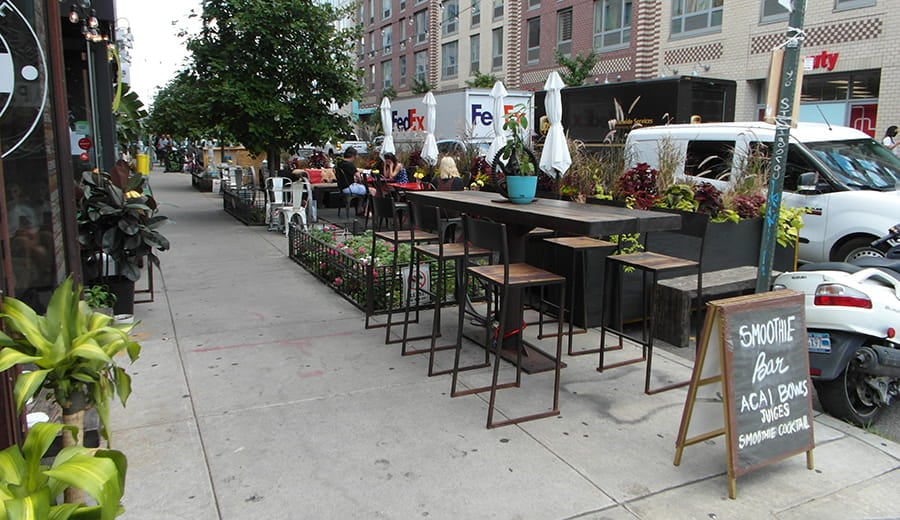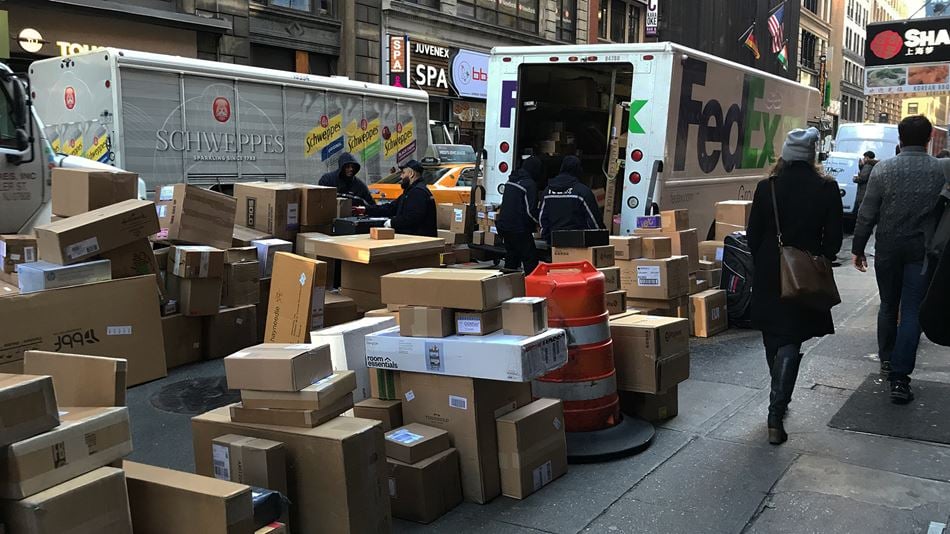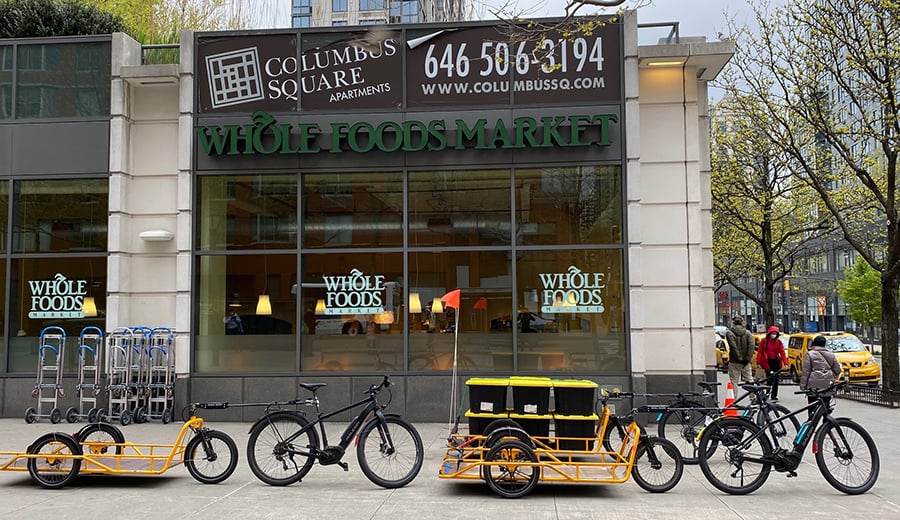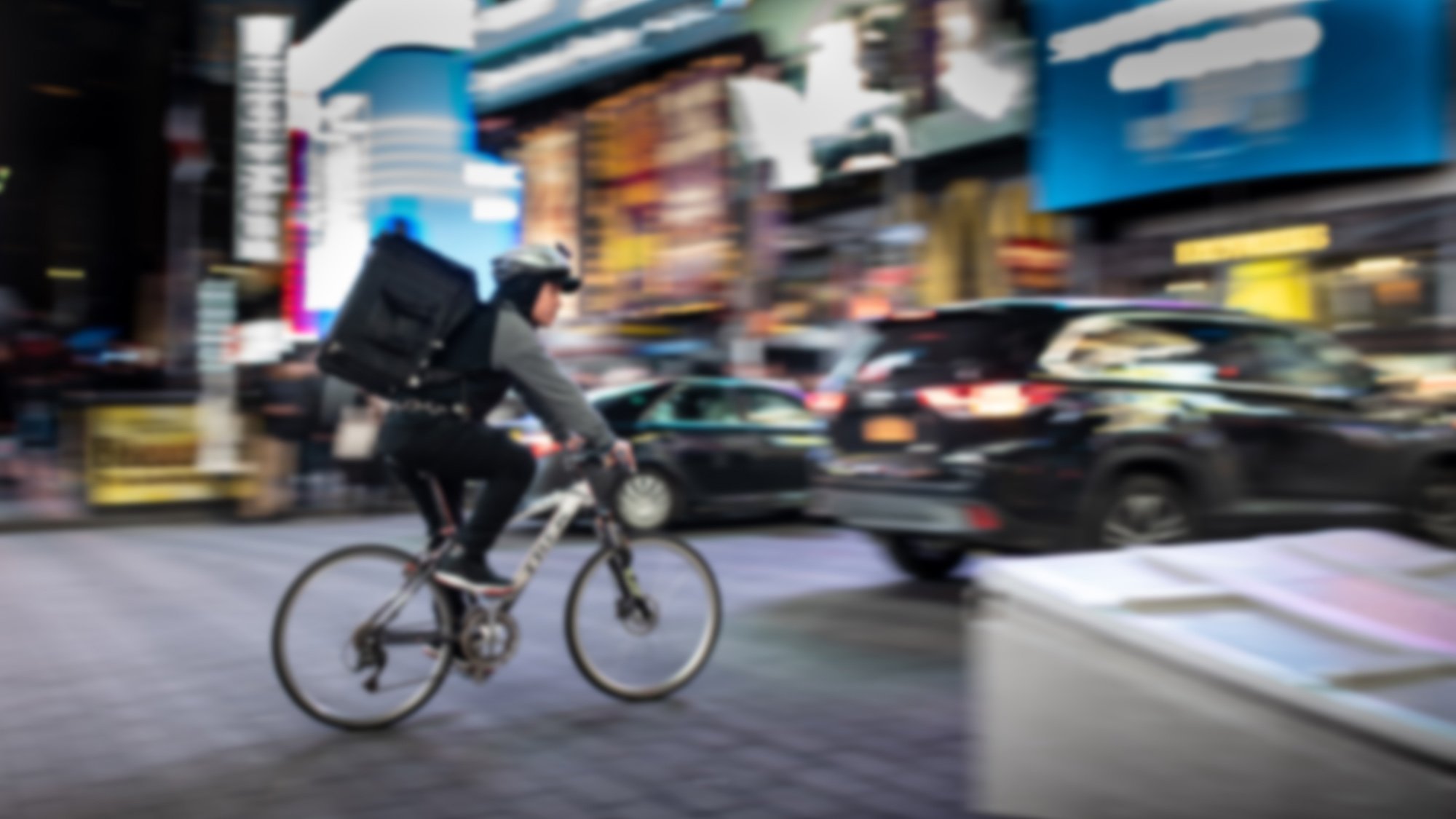The following article was authored by Arup Logistics Consultant Sydni Keppen.
In recent months, the COVID-19 crisis has disrupted civic life in unprecedented ways, especially in America’s urban centers. The rapid transformation of the urban realm is one of the pandemic’s most visible side effects. To meet a pressing need for outdoor space, open-air retail, recreation, and dining areas have sprung up on sidewalks and along curbs once allocated for vehicles. These new amenities have played a vital role in buoying communities, but they have also constrained available space at a moment when the pandemic has driven demand for home delivery services to an all-time high, flooding urban supply routes with delivery vehicles. These changes have converged to create knotty logistical challenges for many urban centers.
Cities must evolve to meet the demands of these shifting usage patterns. Partnering with holistic logistics planners can help municipal decision makers reconcile the needs of a broad range of users and develop programs and policies that support public health, maximize benefits to the community, and keep vital city supply chains robust and resilient.
On-demand delivery on the rise puts pressure on streets
During the early months of the pandemic, homebound residents desperate to get outside and businesses facing financial ruin if they did not reopen began clamoring for the reallocation of street space usually set aside for traffic. Soon, outdoor retail and recreation areas and so-called “streeteries” became regular features of city life. At the same time, the pandemic was driving major changes in consumer behavior. Under COVID-19, America’s already healthy appetite for on-demand delivery rose sharply. In April 2020, e-sales were nearly 50% higher than the previous April and they continued to balloon throughout May and June. Nor did the reopening of brick and mortar stores quench demand for home delivery. As e-sales began to level off in July and August, “buy online pickup in store” (BOPIS) sales picked up steam — so much so that by August 2020, year-to-year BOPIS sales were up nearly 260%. All these changes have forced city streets to absorb a more complex array of users and put new strains on the supply-chain ecosystem.
Unfortunately, many of the challenges that have emerged during the pandemic are unlikely to disappear once it’s over. Consumers have historically been reluctant to abandon a convenience once they’ve grown accustomed to it. This means choices made of necessity during the pandemic, like BOPIS and home grocery delivery, are likely to become ingrained behaviors. Likewise, new distribution methods and technologies that were scaled up to feed consumer demand during the pandemic, like parcel pick-up lockers and drones, will be with us after the crisis passes. In short, the COVID-19 supply chain model is our new normal.
To successfully accommodate the new paradigm in last-mile delivery in a changing urban landscape, city streets and neighborhoods will need to find effective ways to integrate a variety of moving parts and make optimal use of available space.

Maximizing social and economic value
In addition to triggering widespread changes in the public realm, COVID-19 has highlighted the fact that keeping city supply chains running smoothly is essential to the livelihood of both residents and businesses. To support our cities through the pandemic and beyond, it is crucial that we find ways to retain the value of new amenities, like outdoor dining and retail, while also improving the efficiency of last-mile deliveries. Doing so will not only support our economic recovery, it will also reduce congestion and the environmental impacts that come along with it.
To accomplish these goals, municipal planners will need to answer a range of questions — how to reallocate curbside space to serve the public and support service and delivery operations, how to accommodate emerging delivery methods and technologies, and how to secure supply chains while reducing environmental impacts like noise and pollution. Partnering with holistic planning experts can help cities ensure that the programs and policies they create in response to these shifting paradigms deliver maximum social and economic value while improving efficiency.

Are autonomous vehicles and drone delivery the future?
The thing that distinguishes holistic planning from traditional logistics is a focus on the bigger picture. Holistic logistics experts understand that cities are complex organisms and supply chains do not exist in a vacuum. They can work with cities to understand how the interaction of street design, operations, and users are impacting the efficiency of supply chains, public health and safety, and sustainability.
A holistic planning approach starts with a careful study of the key issues contributing to logistics challenges. At present, that entails determining how new street uses, like curbside dining and retail, are converging with an increase in the number and type of delivery vehicles on the road, contributing to congestion and inefficiency and impacting safety and the environment. To give you just one example, the surge in online sales that has put so many more trucks on urban streets has also left them parked curbside for longer durations due the accompanying rise in returns. This has resulted in more traffic snarls on city streets. By analyzing logistics operations at the building, block, and neighborhood level, logistics experts can help municipal planners understand how various factors come together to reduce efficiency and create pain points in the system.
Armed with this knowledge, logistics experts can work with decision makers to identify goals, like enhancing sustainability, supporting local businesses, and improving the integration of mobility systems, and design context-appropriate programs and policies to meet these goals. The specific mitigations recommended will vary from project to project but could, for instance, include dedicating commercial loading zones and implementing technology to allow drivers to reserve curbside space in heavily trafficked neighborhoods — a solution that helps to reduce the amount of time people spend looking for parking, decreases the incidence of double parking, and supports timely delivery pick-ups and drop-offs.
Holistic logistics experts also understand that cities are continuously evolving and that today’s infrastructure and operations solutions must be designed with the future in mind. Skilled logistics planners can work with decision makers to put infrastructure and programs in place to accommodate the future rollout of autonomous vehicles or to facilitate coordination with the Federal Aviation Administration to institute drone delivery.

What is a freight-friendly street design?
The changes COVID-19 has triggered in the public realm have created complex challenges. To solve these challenges, cities will benefit from working with experts who have a thorough understanding of best practices and the ability to devise holistic strategies to meet current demands. By leveraging best practices, like freight-friendly and resilient street design; optimized delivery management and procurement programs; consolidated delivery operations; and waste management strategies, municipal planners can implement changes that enhance quality of life for residents while improving mobility and supporting commercial operations.
By implementing best practices in freight-friendly street design, logistics experts can help cities find ways to incorporate new distribution trends and technologies accelerated by COVID-19 — like drones, autonomous vehicles, and parcel pick-up lockers — and take advantage of the opportunities they bring. Here’s one example: Several major companies, including Walmart, Amazon, and UPS, have been piloting the use of drones for package delivery during the pandemic. Rather than resisting or ignoring the rise of drones, cities will want to explore opportunities to use drones to support social distancing and foster the creation of new jobs.
Best practices in delivery management and procurement can help city planners reduce the number of vehicles on the road at peak times. Logistics experts can also help municipal planners take advantage of consolidation opportunities to reduce the number of motorized delivery vehicles on streets and provide other benefits. For instance, to help one client reduce the number of trucks in an urban neighborhood without sacrificing efficiency, Arup recommended they centralize deliveries by establishing district logistics hub from which light-duty vehicles and bikes could be used to carry goods to their destination. Other strategies include extending off-hour delivery programs and implementing preferred vendor programs for specific commodities — a solution that helped one Arup client reduce the presence of commercial vehicles on a luxury shopping street by 70% during the day.
At a moment when curb space is at a premium, it is also important for cities to limit the amount of trash on neighborhood sidewalks. Logistics experts can help cities develop waste management strategies that enhance the public realm, such as attractive on-street trash containment solutions for large business owners. Trash management can also be improved by setting aside strategically located areas for waste consolidation. The deployment of measures like these reduces the volume of waste on city sidewalks, frees up space, and limits the greenhouse gas emissions associated with waste collection.
Leverage logistics to make cities healthier, more sustainable, and more resilient
While the best practices outlined here have been proven to help reduce truck trips and conflicts within the public realm, their overall effectiveness hinges on the way they are deployed to meet specific challenges. There is no one-size-fits-all approach to holistic planning because each city and each neighborhood is unique. Working with skilled logistics experts who approach planning holistically can help municipal decision makers ensure that the changes COVID-19 has triggered in the public realm are transformed into positive disruptions and that cities come out of the crisis healthier, more sustainable, and more resilient.
 ;
;





